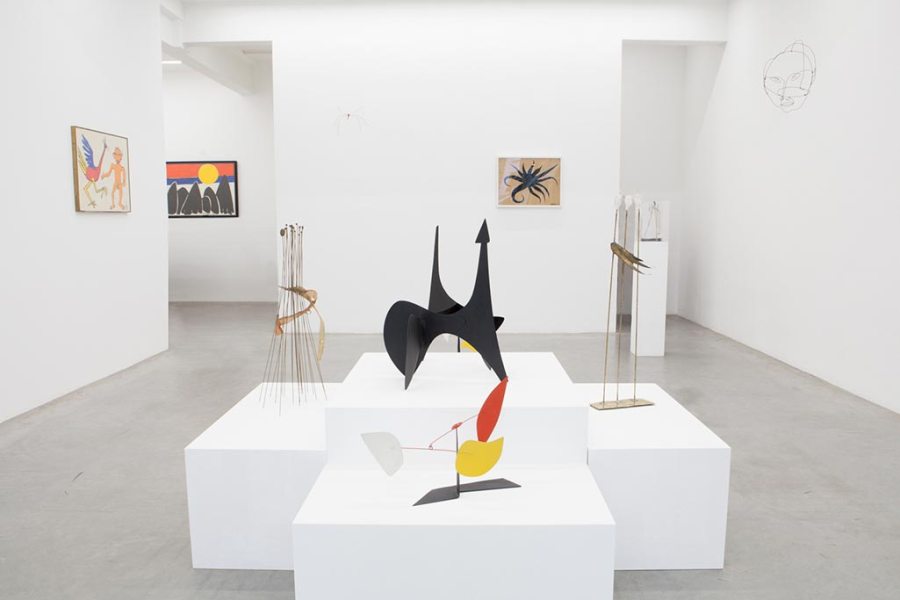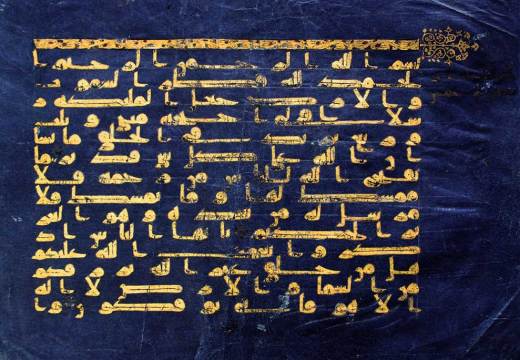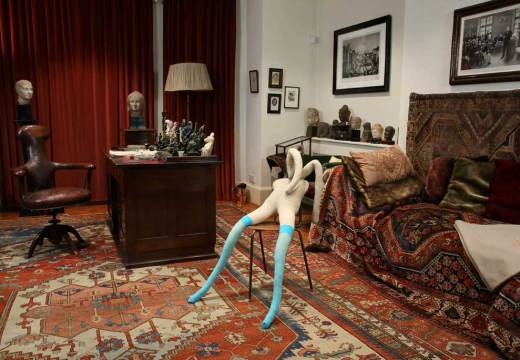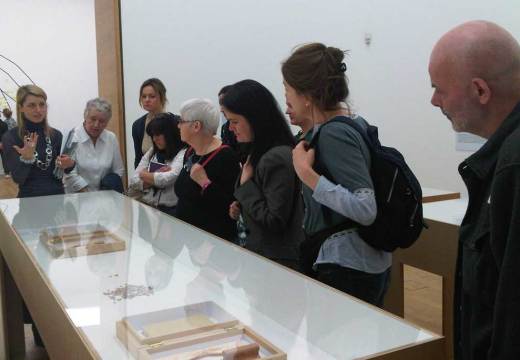An exciting scholarly exhibition at the Ronchini Gallery looks at affinities between the American artist Alexander Calder and his Italian contemporary, Fausto Melotti.
It draws on the time both artists spent in Spoleto, Italy, where their work was supported by the Italian cultural figure Giovanni Carandente. He curated the important exhibition ‘Sculture nella città’ in 1962, for which Calder executed his first monumental stabile sculpture, the Teodelapio, marking a turning point in his career. Melotti was not invited to participate in 1962, but exhibited alongside Calder in several subsequent shows in Spoleto.
This is not the first exhibition to compare the work of these artists. In 2007 New York’s Barbara Mathes Gallery hosted a show that looked at their mutual background in engineering, their love of music and dance, and the similarities in their use of material – all of which is evident in the Ronchini Gallery’s exhibits.
Fausto Melotti’s L’Abbraccio (The Hug), 1961 is a small brass sculpture in which three figures embrace. It is composed of three straight lines, and a winding spiral. Bodies and limbs are entwined: the arms of the central figure spiral around the other two. This figure carries a bell tied to a brass chain. Although the sculpture remains still, the potential sound and movement of a bell, swinging at a pace dictated by gravity and its own weight, is suggested to the viewer.
By introducing a sense of movement, balance and sound, this small sculpture of an everyday hug engages with a far larger theme: the cosmic universe. The vibrations of the bell echo invisible energies at play, and the sculpture has a celestial aspect; the cluster of round heads like three moons, the indefinite spiral of arms like a Milky Way.
Alexander Calder was also interested in balance, movement and the laws of physics. In his playful ‘mobiles’, indeterminate shapes rotate around each other like planets, moons and stars. ‘These works are so carefully engineered,’ says Roxanna Farboud of Ronchini Gallery, ‘even the simplest pieces are difficult to display’.
Calder uses the human figure to suggest abstract notions. Like Melotti’s L’Abraccio, the title of Dancer, Headless Man attacking a Woman, Dancer (1967) suggests a concrete subject. However, as in Melotti’s work, the fluid linear movements of the three abstracted pieces suggest dance, music and motions in space and time. Calder’s inclusion of a central carnal figure (the man of the title) is somewhat unexpected amidst the ethereal grace of the dancers, and employs a Surreal sort of black humour.
The similarities between Calder and Melotti may or may not have been consolidated in Spoleto, and rather more might have been made of this: the development of Melotti’s work outside Spoleto, for example, goes untraced. The gallerists refer to the ‘healthy rivalry’ sparked by Calder’s presence in the town, but this was not clear enough in the arrangement of the works themselves.
A better picture of Spoleto in the 1960s is necessary to make the town’s influence – and the artist’s mutual influence on each other – more apparent. What was the art scene there like at the time? What ideas circulated? How did both artists differ from their contemporaries there?
I found this show inspiring and original for the way it reflected the exchange of ideas that took place across cultures and continents. But I left the gallery wanting to know more about Spoleto, and its particular impact on these artists’ work.
‘Calder & Melotti: Children of the Sky’ is at Ronchini Gallery, London, until 30 November 2013.
Unlimited access from just $16 every 3 months
Subscribe to get unlimited and exclusive access to the top art stories, interviews and exhibition reviews.














![Masterpiece [Re]discovery 2022. Photo: Ben Fisher Photography, courtesy of Masterpiece London](http://www.apollo-magazine.com/wp-content/uploads/2022/07/MPL2022_4263.jpg)
Has the Fitzwilliam got its rehang right?